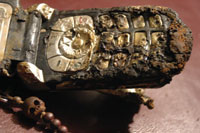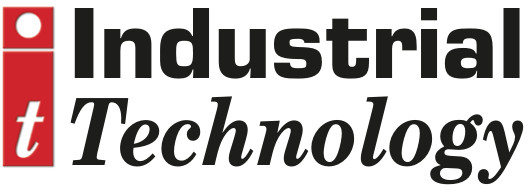
Posted to News on 19th Sep 2010, 00:00
Are Lithium-ion batteries safe?
Lithium-ion batteries have helped to revolutionise technology development. However, they also have a reputation for volatility and bad press has meant that consumers and manufacturers have questioned their long-term viability. Jean-Louis Evans, managing director at TÜV Product Service offers this overview.

Electronic devices are becoming smaller with many power hungry features, resulting in the battery pack also becoming smaller, but at the same time requiring greater capacity. Such devices are often carried in people's pockets, increasing the potential safety hazard and risk of personal injury. To reduce that risk, education of the consumer plays a significant part by promoting the safe use of batteries and discouraging the purchase of non-genuine or counterfeit batteries and chargers.
While it is true that the increase in capacity of today's batteries, and end-user misuse, is part of the reason for the Li-ion battery's bad publicity, the manufacturing process has also been questioned. Many battery safety incidents involving notebook PCs have been linked to inadequate procedures relating to the avoidance of contaminates in production. As a result of the high number of incidents involving Li-ion batteries, there was an international move to improve testing and quality control through the introduction of standards including UL 1642 "Lithium Batteries", IEEE 1725 "IEEE Standard for Rechargeable Batteries for Cellular Telephones" and "UN Recommendations on the Transport of Dangerous Goods Manual of Tests and Criteria" (ST/SG/AC.10/11).
Another key catalyst was the introduction of the CTIA (Cellular Telecommunications and Internet Association) certification scheme, an industry led initiative in the USA that is based on the IEEE 1725 standard. Whilst US-centric, it has had a positive effect worldwide as manufacturers are unlikely to exclude themselves from the massive potential of the American market. The CTIA programme was devised in partnership with leading cellular network operators and required all products to undergo mandatory third-party testing and auditing, with certification categories covering cells, battery packs and power adapters, as well as complete cellular product systems. The CTIA requirements now also include another standard, IEEE 1625, which relates to notebook computers with GSM functionality that use Li-ion battery packs.
Manufacturers of Li-ion batteries now include internal protection devices, in addition to the protection circuits within the overall battery pack, to guard against excessive heat and pressure. These include a vent plate, which allows the safe release of gas, a positive temperature coefficient (PTC) so that a device safely trips at a
pre-determined current, and a separator, which once it reaches its defined temperature prevents the electrical current from flowing. Some prismatic batteries also have an additional feature, a thermal fuse which limits the current under fault conditions.
A protection circuit is also usually fitted within the battery pack that monitors the cell and prevents over-charge, over-discharge, and over-current. Also present is a temperature sensing device designed to invoke protective action in the event of over-temperature.
Lithium-ion batteries have a number of importance advantages:
- High energy density: Compared to other battery technologies such as nickel-cadmium (Ni-Cd), the energy density of the Li-ion battery is greater with the opportunity to increase capacity, for example by adding more nickel to the cathode.
- Small package size and weight: The Li-ion battery is ideal for portable consumer products. Designers have the option of using the prismatic package, which is typically thinner than 19mm, or the Li-ion polymer pouch, which is typically thinner than 5mm. In addition to the size advantage, there is also a reduction in weight due to the chemistry (eg solid/gel electrolytes rather than liquid electrolytes) and the packaging used (eg foil).
- Memory effect: Unlike Ni-Cd, Li-ion batteries do not suffer from 'memory effect'. Memory effect occurs where over time a battery has been consistently partly used and then fully recharged which results in the appearance of rapid discharge. In modern batteries this is more likely to be caused by voltage depression as a result of repeated overcharging leading to clogged plates which increases internal resistance thus lowering the voltage of the battery.
- Low discharge rate: Compared with other rechargeable batteries Li-ion have a low self-discharge rate which means they can be left unused for longer.
But we have to balance that against the particular disadvantages of Lithium ion batteries:
- Protection: Li-ion batteries are sensitive to temperature and the chemistry is complex, therefore circuitry is required to protect the battery against over-charge, over-discharge, and over-temperature.
- Premature ageing: Li-ion batteries are susceptible to capacity deterioration over time; however, storage of the battery in a cool environment can reduce the effects. Once the battery is shipped by the manufacturer it is important that it is used it as soon as practical in order to provide the end-user with the longest possible battery life.
- Chemistry: Due to the nature of lithium, severe temperature or mechanical impact can result in venting and possible thermal runaway. This requires more extensive testing than other forms of battery technology to demonstrate stability in the final battery product and safeguard against potential foreseeable misuse
- Production costs: Compared to other types of rechargeable battery production costs can be high.
The development of Li-ion technology has played a significant role in the pace of technology evolution and today's user demands that mobile devices and other technologies give them increased functionality with portability. Li-ion has helped manufacturers deliver on that.
While Li-ion batteries still have some disadvantages, their progressive development over the last few years has meant that these are far outweighed by the advantages. An improvement of manufacturing processes through the introduction of more robust standards, as well as increasing consumer understanding of how to respect these batteries, means that the safety of Li-ion has dramatically improved. It is a battery technology that has had a steep learning curve, now resulting in a good battery option that enhances all of our daily lives. Bad publicity and safety scares should be a thing of the past, at least for the non-counterfeit product.







